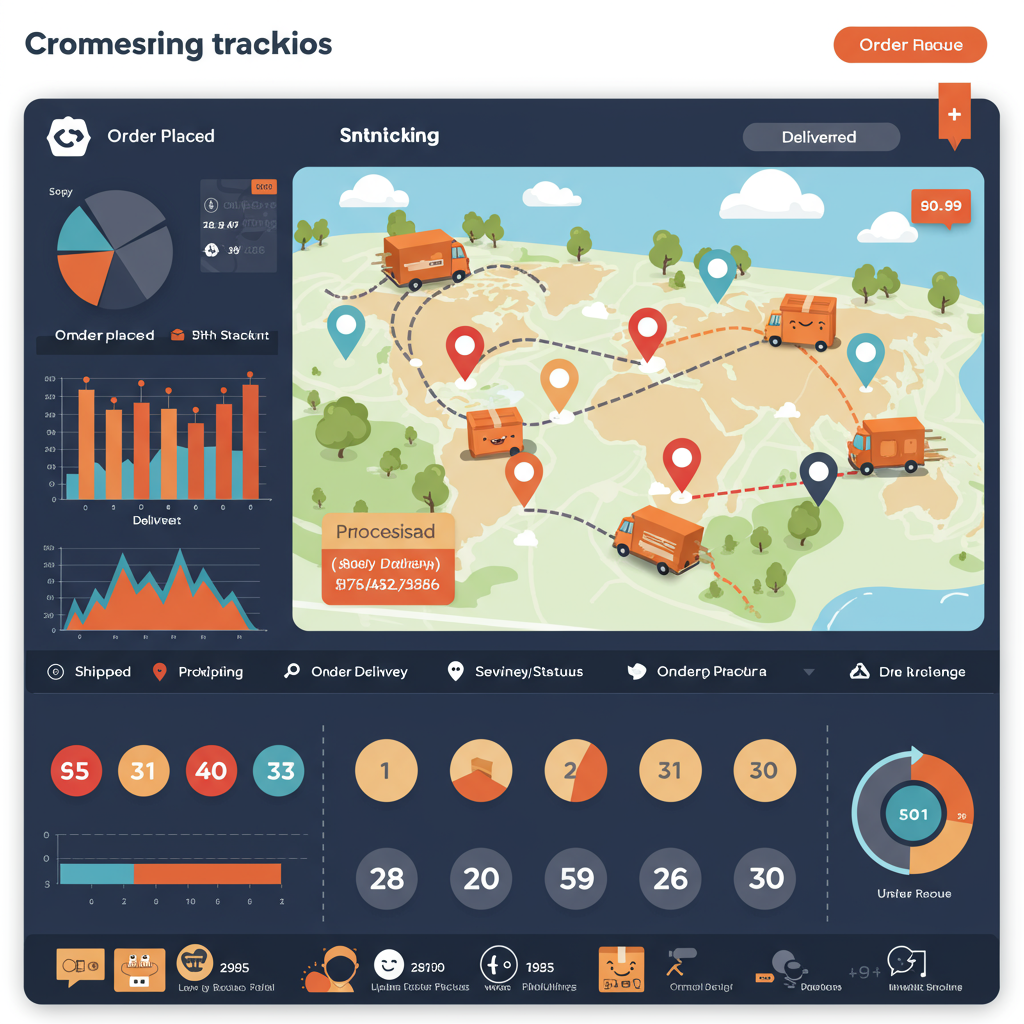Elevate your customer experience and streamline operations with robust order tracking integrations for your Shopify store.
As a Shopify merchant, I’ve learned that one of the most critical aspects of running a successful online store isn’t just about making sales; it’s about what happens *after* the sale.
Specifically, I’m talking about order tracking. It might seem like a minor detail, but I assure you, it’s a cornerstone of customer satisfaction and building lasting trust.
In today’s e-commerce landscape, customers expect transparency and real-time updates on their purchases. They want to know where their package is, when it will arrive, and if there are any delays.
Failing to provide this can lead to a flood of “Where Is My Order?” (WISMO) inquiries, which can quickly overwhelm your customer service team and detract from other important tasks.
That’s why I believe integrating robust order tracking into your Shopify store isn’t just a nice-to-have; it’s an absolute necessity for any serious merchant.
It transforms a potentially anxious waiting period into a positive brand experience, reinforcing customer loyalty and encouraging repeat business.
So, let’s dive into how you can effectively implement order tracking for your Shopify store, covering everything from native options to powerful third-party solutions.
First, let’s consider what Shopify offers out-of-the-box. When you fulfill an order in Shopify and add a tracking number, the platform automatically sends a shipping confirmation email to your customer.
This email includes a link that directs them to a basic tracking page, usually hosted by the carrier (like USPS, FedEx, or DHL).
While this is a good starting point, I’ve found it often falls short of customer expectations. The tracking page is generic, unbranded, and can sometimes be confusing for customers navigating different carrier websites.
It also doesn’t offer much in terms of customization, proactive notifications, or a unified tracking experience if you use multiple carriers.
This is where third-party order tracking solutions truly shine. They bridge the gap between basic carrier tracking and a comprehensive, branded customer experience.
These solutions typically integrate directly with your Shopify store, pulling order data and then connecting with a vast network of shipping carriers worldwide.
The primary benefit I’ve seen is the ability to provide a *branded tracking page*. Instead of sending customers to a generic carrier site, they land on a page that looks and feels like an extension of your own store.
This reinforces your brand identity at every touchpoint, even after the purchase. It’s a subtle yet powerful way to enhance the post-purchase experience.
Another crucial feature is *proactive notifications*. These apps can automatically send email or SMS updates to your customers at key stages of their delivery journey.
Think about notifications for “In Transit,” “Out for Delivery,” “Delivered,” or even “Exception” alerts if there’s a delay. This level of communication significantly reduces WISMO inquiries.
When evaluating a third-party tracking solution, I always look for several key features. *Multi-carrier support* is paramount, especially if you ship internationally or use different carriers for various product types.
*Customizable notification triggers* allow you to tailor when and how messages are sent. *Analytics and reporting* are also incredibly valuable, providing insights into delivery performance and potential issues.
Some advanced solutions even offer *estimated delivery dates*, *pickup point locators*, and *return management integration*, further enhancing the customer experience.
So, how do you go about integrating one of these solutions? The process is generally straightforward. First, you’ll need to choose an app from the Shopify App Store.
Popular choices often include names like AfterShip, Trackr, or ParcelPanel, but I encourage you to research and find one that best fits your specific needs and budget.
Once you’ve selected an app, the installation process is usually a one-click affair from the App Store. You’ll grant the app necessary permissions to access your order data.
After installation, the next step is configuration. This typically involves connecting your shipping carriers within the app’s dashboard. Many apps have pre-built integrations for major carriers.
You’ll then customize your branded tracking page, adding your logo, brand colors, and any specific messages you want to convey.
Setting up notification rules is also a key part of this stage. You’ll define which events trigger an email or SMS, and you can often personalize the message content.
Finally, I always recommend thorough testing. Place a test order, fulfill it with a real tracking number, and follow the entire tracking journey from a customer’s perspective.
Ensure the tracking page loads correctly, notifications are sent as expected, and the information is accurate. This step is crucial for a smooth rollout.
Beyond the technical setup, I’ve found that clear communication with your customers is vital. Let them know you offer robust tracking and how they can access it.
Include a link to your tracking page in your order confirmation emails and on your website’s footer or a dedicated “Track Your Order” page.
Proactive customer service, armed with the same tracking data, can also turn potential issues into positive interactions. If you see a delay, reach out before the customer does.
Leveraging the data from your tracking solution can also provide valuable insights. Are certain carriers consistently delayed? Are there common delivery exceptions in specific regions?
This information can help you optimize your shipping strategy, improve carrier selection, and even inform your inventory management.
What do you think about the importance of detailed order tracking for your Shopify store? I’d love to hear your thoughts and experiences.
In conclusion, while Shopify provides basic tracking, investing in a dedicated order tracking integration is a game-changer for enhancing the post-purchase experience.
It reduces customer service overhead, builds brand loyalty, and provides valuable data to optimize your operations.
For me, it’s an indispensable tool that helps turn one-time buyers into loyal, repeat customers. I highly recommend exploring the options available and implementing a solution that fits your business.






